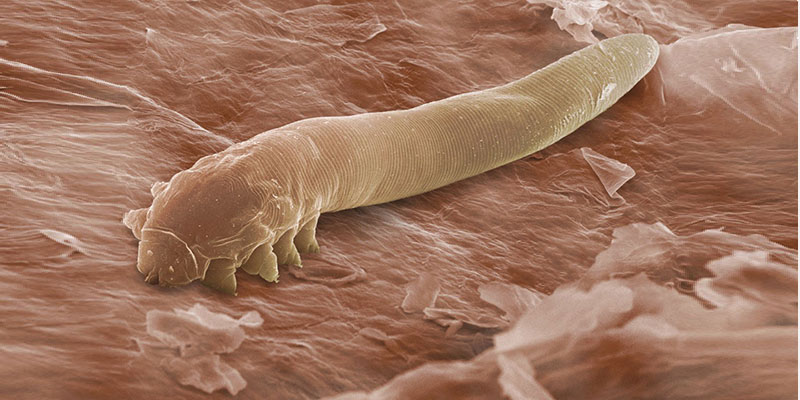You shower. You shampoo. You brush and floss your teeth. Your hygiene’s pretty good, right? Maybe. Did you know your eyelids and lashes need care and cleaning, too – and not just if you wear contacts or glasses? If you don’t practice good eye hygiene, you can become a victim of a host of eye infections. Not to mention becoming host to an uncomfortable infestation: eyelash mites.
What are eyelash mites?
Eyelash mites, or Demodex mites, are tiny parasites that live among the hair follicles around your eyes and on your face, feeding on skin cells and the oils that help keep your eyes moist and healthy. Eyelash mites are common: Some studies suggest they are found in 25-30% of dry eye sufferers between the ages of 20 to 50 years old, with rates increasing dramatically as people get older.
How long do they live?
Eyelash mites only live 2-3 weeks, but their eggs can stay on your face and eyelids for much longer. The eggs hatch over time and repeat the bug’s life cycle over months.
How do I know if I have eyelash mites?
In some cases you wouldn’t even know you had them. But many people aren’t so lucky. Those hungry little bugs can cause not only dry eye, but also thinning eyelashes, itchy rashes, and red, swollen eyelids that might mean you have a condition known as “blepharitis.” Some people also get a crawling feeling on their face and around their eyes at night, when eyelash mites are most active.
How do eyelash mites spread?
Eyelash mites can be spread through contact with a person or pet that has them, from dust containing their eggs, or from infected pillowcases or bed sheets. They can only be seen under high magnification, such as the magnifying lamps and lenses used by your e ye doctor. But it’s easy to spot their signs (especially red, crusty eyelids) from across a dinner table.
ye doctor. But it’s easy to spot their signs (especially red, crusty eyelids) from across a dinner table.
How can I get rid of eyelash mites?
Killing and controlling Demodex mites is relatively simple. Regular, ongoing eye hygiene practices such as the following can help:
- Wash bedding, especially pillowcases, at least once per week in hot water.
- Wash pillows in hot water and replace occasionally.
- Remove eye makeup before going to bed and replace eye makeup periodically to reduce chance of infection.
- Practice good eye hygiene by using eyelid wipes containing 4-Terpineol regularly to clean eyelids and eyebrows, where Demodex mites may be lurking. It’s derived from tea tree oilthe only stuff clinically proven to eradicate the mites, and it’s safe for everyday use.
If you believe you might have symptoms, talk to your eye doctor about eyelash mites. Then follow up with good eye hygiene, and give those unwelcome lurkers in your lashes the boot!




